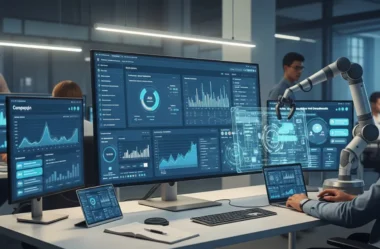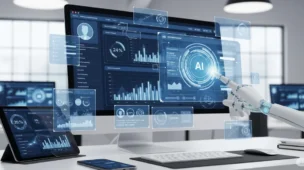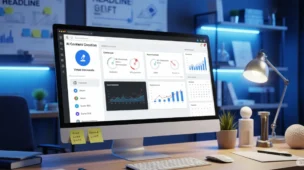Reading time: 4 minutes
In digital marketing, timing, relevance, and efficiency are critical. As the digital landscape grows more complex, marketers are turning to artificial intelligence (AI) and automation to gain a competitive edge. When combined, these technologies streamline campaign management, improve targeting, and increase return on investment (ROI).
This article explores how AI and automation work together in digital campaigns — and why this duo is reshaping marketing strategy across industries.
Understanding the Difference: AI vs. Automation
Though often used interchangeably, AI and automation serve distinct roles:
- Automation executes predefined rules without needing human input. Example: scheduling social media posts.
- AI simulates human intelligence — learning from data, adapting, and making decisions. Example: optimizing ad bids in real time.
When combined, automation handles repetitive tasks, while AI injects intelligence to optimize and refine campaigns dynamically.
Where AI and Automation Intersect in Campaigns
1. Smart Ad Targeting
AI tools like Meta (Facebook) Ads, Google Ads, and TikTok Ads use machine learning to determine which users are most likely to engage with a campaign. By analyzing historical behavior, browsing habits, and engagement data, these platforms automatically optimize targeting — often better than any human could.
Automation ensures the ads are delivered at the right times, across platforms, and to the most responsive audiences.
2. Real-Time Budget Optimization
Traditional budget management is manual and reactive. AI changes this by automatically reallocating funds to high-performing ads while reducing spend on underperformers — in real time. Automation platforms like Adzooma and Revealbot make this possible through rules powered by AI insights.
3. Automated A/B Testing
Marketers no longer need to manually monitor dozens of variations. AI can run multivariate tests on copy, visuals, CTAs, and more — then automatically adjust campaigns based on what’s working.
For example, platforms like Google Optimize or Unbounce use AI to identify winning combinations and shift traffic accordingly.
4. Predictive Campaign Planning
AI analyzes previous campaign results, customer journeys, and seasonal trends to predict the success of upcoming campaigns. This allows marketers to:
- Forecast ROI before launching
- Identify the best times to run promotions
- Choose the most effective channels and formats
Automation then schedules and deploys campaigns at the optimal times.
5. Dynamic Creative Optimization (DCO)
DCO uses AI to tailor ad creatives (images, headlines, offers) based on user data. This means every user sees the most relevant version of your ad. Platforms like Google Display Network and Adobe Advertising Cloud use this technology.
Automation ensures each creative version is delivered seamlessly, with performance tracked and adjusted in real-time.
6. Email Campaigns at Scale
AI-powered email platforms like Mailchimp, ActiveCampaign, and Klaviyo use behavioral data to segment audiences, personalize content, and determine the best times to send.
Automation triggers the emails based on actions — such as cart abandonment or content downloads — ensuring personalized follow-ups without manual effort.
7. Chatbots and Conversational Campaigns
AI-driven chatbots engage users in personalized conversations, answer FAQs, and guide them through the sales funnel. Tools like Drift and Tidio automate interactions across websites and social media, increasing lead conversion and support efficiency.
8. Content Scheduling and Distribution
AI analyzes when your audience is most active, while automation tools like Buffer or Hootsuite schedule content accordingly. AI can also suggest the best types of content per platform, based on past engagement.
Benefits of AI and Automation in Campaigns
- Increased Efficiency: Reduce manual workload and free up time for strategy
- Improved Accuracy: Make data-driven decisions, not assumptions
- Real-Time Optimization: Adapt to performance instantly
- Scalability: Run larger, more complex campaigns with minimal effort
- Higher ROI: Focus budget and attention where it truly performs
Challenges and Considerations
Despite the benefits, there are challenges:
- Data privacy: Ensure compliance with GDPR and other regulations
- Over-automation: Don’t lose the human touch — storytelling still matters
- Tool selection: Choosing the right AI + automation stack is key
- Skill gaps: Teams may need training to maximize tool capabilities
How to Start Using AI and Automation Together
- Audit your current workflow: Identify tasks that can be automated or enhanced with AI.
- Choose integrated platforms: Tools like HubSpot, Salesforce, or Adobe offer both AI and automation.
- Test in phases: Start with one campaign or workflow to measure results.
- Measure performance: Use clear KPIs to evaluate impact.
- Continuously learn: AI improves with data, so let it evolve with your strategy.
Final Thoughts: A Smarter Way to Market
AI and automation are no longer optional tools — they are essential allies in building smarter, more responsive campaigns. Together, they allow marketers to deliver the right message, to the right person, at the right time — every time.
As you integrate these technologies, you’ll discover more than just efficiency: you’ll unlock a new level of marketing intelligence that positions your brand for long-term success in an ever-changing digital world.




